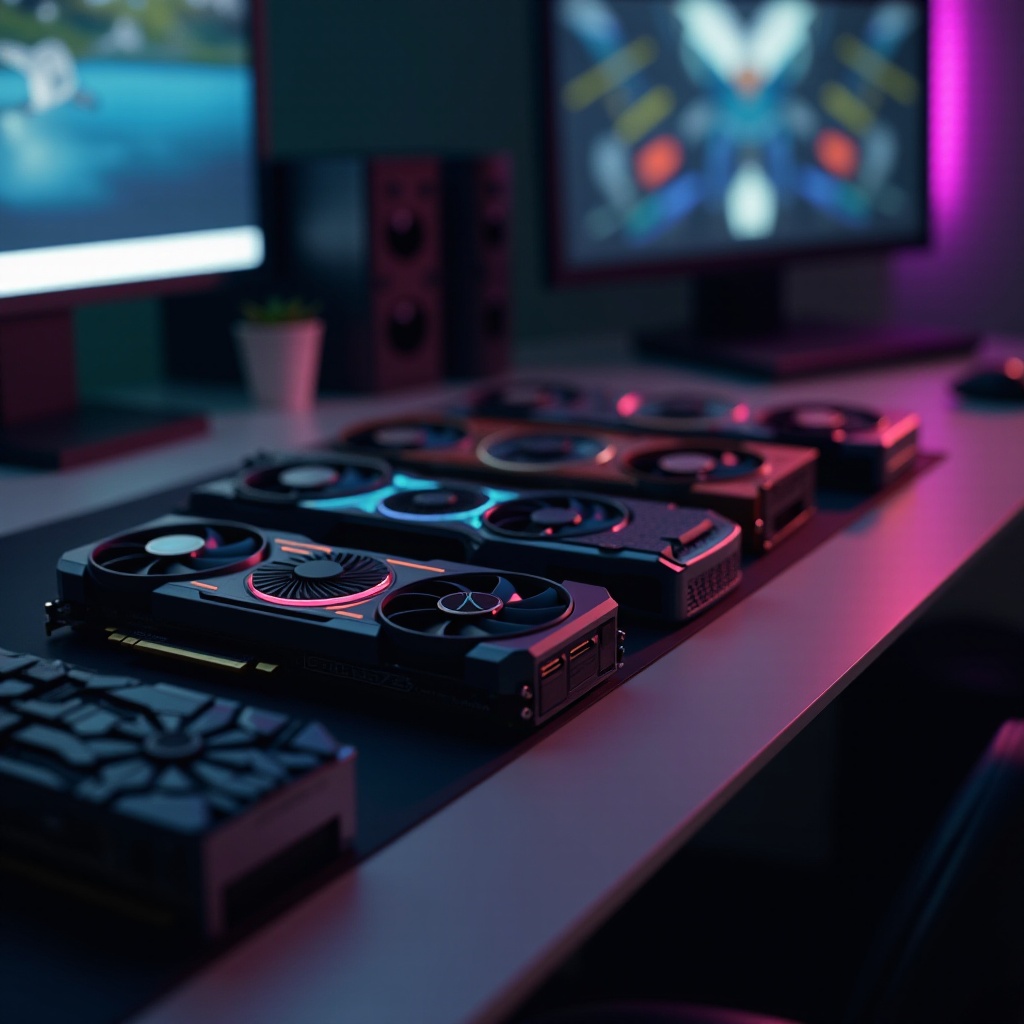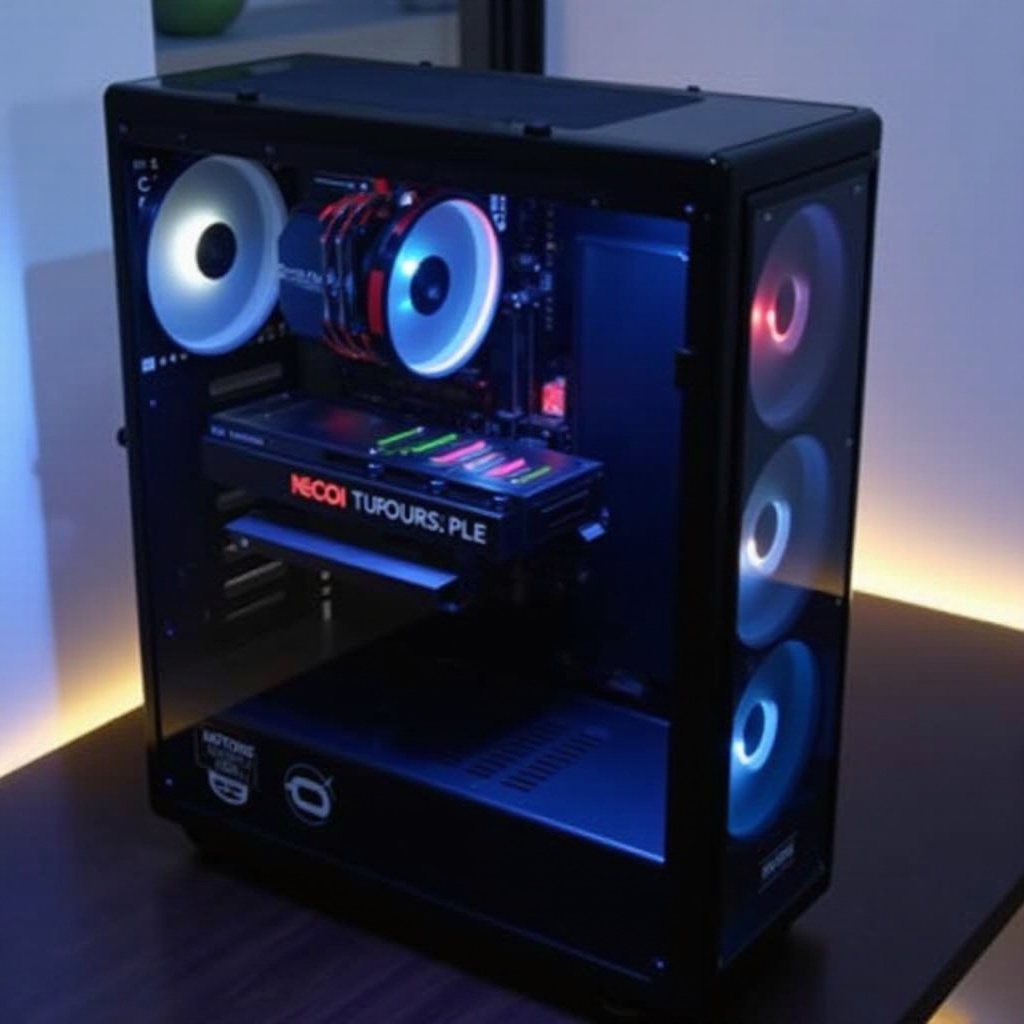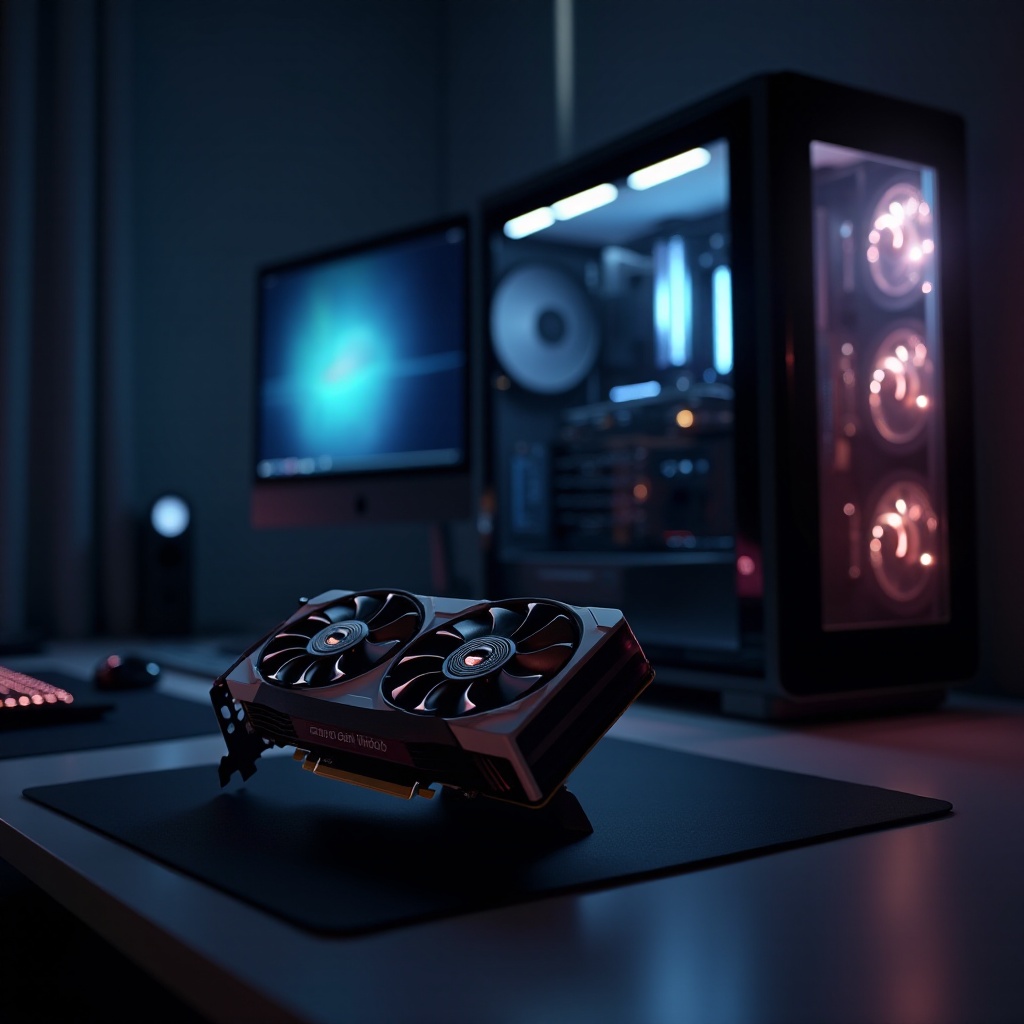Introduction
Choosing the right graphics card is crucial for optimizing your computer’s performance, particularly in gaming or professional tasks like video editing. The vast array of options can make the selection process intimidating. This guide aims to simplify your decision-making, enabling you to choose a card that matches your specific needs and budget.

Understanding Graphics Cards
To make an informed choice, it’s important to grasp the fundamental roles that graphics cards play.
What is a Graphics Card?
A graphics card, essential for your PC, handles rendering images, videos, and animations. It processes data from the CPU and translates it into a format displayed on your monitor, ensuring seamless visuals for various tasks.
Integrated vs. Dedicated Graphics Cards
Integrated graphics cards, which share memory with the CPU, are common in laptops and work well for basic tasks. Dedicated graphics cards, however, have their own memory and offer enhanced performance for gaming and intensive graphic applications.
Key Considerations When Choosing a Graphics Card
Having understood the types of graphics cards, let us explore additional factors to consider.
Performance Needs
- Gaming: For gamers, seek cards that sustain high settings in the latest games.
- Professional Use: Choose cards designed for heavy-duty tasks like video editing or 3D rendering.
- General Use: Integrated graphics are usually adequate for simple browsing or streaming.
Budget Constraints
Determine a budget range. While higher budgets often translate to better performance, assess whether top-tier specifications are necessary for your needs.
Compatibility
Verify that the card suits your system:
– Ensure motherboard compatibility.
– Confirm your power supply can support the new card.
– Check that the card fits within your case dimensions.
Popular Graphics Cards in 2024
Now that you’ve evaluated your needs and budget, explore the popular graphics cards available in 2024.
Entry-Level Options
- NVIDIA GTX 1650: Ideal for basic gaming and everyday applications.
- AMD Radeon RX 6400: Affordable with satisfactory performance for light gaming.
Mid-Range Options
- NVIDIA RTX 3060: Offers a great balance between performance and cost for gamers.
- AMD Radeon RX 6700 XT: Perfect for 1440p gaming, providing excellent power at reasonable prices.
High-End Options
- NVIDIA RTX 4090: Provides elite performance for demanding applications.
- AMD Radeon RX 7900 XTX: Excellent choice for gamers aiming for the best 4K experience.

Features to Look for in a Graphics Card
With popular models in mind, identify the features that should influence your purchase decision.
Memory (VRAM)
Evaluate the memory size and type:
– More VRAM allows for higher resolution and enhanced textures.
– Aim for at least 4GB for 1080p gaming; 8GB or more for higher resolutions.
Ray Tracing and DLSS
Important for modern gaming:
– Ray Tracing: Delivers realistic lighting and shadows.
– DLSS (Deep Learning Super Sampling): Boosts performance by dynamically enhancing image quality.
Cooling Solutions
- Opt for cards with effective cooling systems for stable performance.
- Types include active (fan-based), passive (heatsinks), and hybrid (liquid) cooling.
Understanding Benchmarks and Reviews
Beyond specifications, understanding performance tests and reviews is vital for choosing the right card.
How to Interpret Graphics Card Benchmarks
- Focus on benchmark results specific to games you play or applications you use.
- Match these results with your expectations for smooth operation.
Sources for Reliable Reviews
- Consult well-regarded tech review sites and trusted YouTube channels.
- Seek consistent feedback and reviews from diverse platforms.
Making the Final Decision
Having examined the features, performance needs, and benchmarks, refine your choices to make a well-informed decision.
Assessing Your Specific Needs
Reassess your main activities:
– List primary uses like gaming or editing.
– Compare them with what each graphics card offers.
Where to Buy
- Purchase from reputable online retailers such as Amazon or Newegg.
- Visit local electronics stores for in-person advice.
- Always consider warranties and return policies before finalizing the purchase.

Conclusion
Selecting a graphics card involves evaluating performance needs, budget, and potential future needs. This guide equips you with the insights required to make an informed and effective choice.
Frequently Asked Questions
Is it worth buying a used graphics card?
Buying used can be cost-effective but carries risks with warranty and lifespan. Purchase from trusted sources.
Can upgrading my graphics card improve my system’s performance drastically?
Yes, especially in GPU-intensive tasks like gaming and rendering; ensure CPU and RAM aren’t bottlenecks.
How often should I upgrade my graphics card?
Upgrade when your current card can’t meet your needs or approximately every 4 to 5 years to stay current with new technology.
